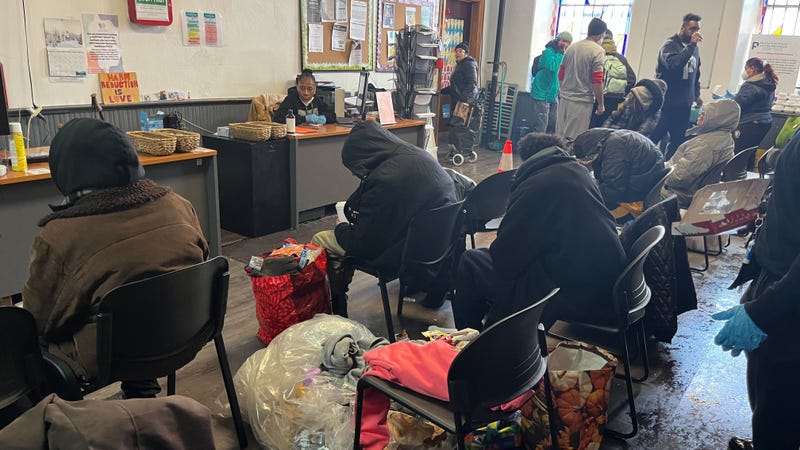
UPDATED: Jan. 21, 4 p.m.
PHILADELPHIA (KYW Newsradio) — With temperatures below the freezing mark, Philadelphia has under a code blue advisory since Friday. The city has opened up warming centers, but not all locations are feasible for all people.
On weekends, Ameenah works the day dispatch shift at Project HOME’s Outreach Coordination Center on Fairmount Avenue, where phones have been ringing constantly throughout the weekend.
“Well it’s been very busy,” she said. “Calls been coming in tremendously … every second, on a second.”
Ameenah estimates the center has received between 300 and 500 calls this weekend.
She sits at a desk piled high with hundreds of written reports from this frigid weekend, and she answers those calls. She directs people in need to shelters near them where they can get warm. And for people in more dire situations, she sends Project HOME outreach teams to assist.
“We just answer them as we go and send the outreach teams,” she said. “We have outreach teams out in the streets. They’re in every area” — including Kensington, West Philadelphia, North Philadelphia, South Philadelphia, and at the airport.
During a code blue, when temperatures drop to dangerous levels, teams are on call 24 hours a day.
“It saves their life,” Ameenah said. “A lot of them have situations and they wasn’t always like what they’re in now — so just to help them get back to where they were.”
Outside of that, Ameenah said, she can also direct those who are capable of going themselves to the nearest shelter that has space. During such drastic conditions, she’s also often a comforting voice for those that need it.
“Try to make them feel comfortable. Trust us, for one. And just listen. That’s all they need is somebody they trust and just listen to them.”
At the city level, emergency shelters stay open 24 hours, and extra beds are added to accommodate more people. Warming centers also operate as another place to stay out of the cold.
However, according to Kate Perch with Prevention Point Philadelphia, not everyone has equal access to warming centers.
“In Center City, you might have stores or other things,” Perch said. “Thankfully the libraries have been coming back online on Saturdays. But particularly in residential neighborhoods, there just aren't as many indoor places for people to go.”
One woman who wished to remain anonymous came in to warm up at Prevention Point in Kensington. She says, as a homeless person, she’s not readily welcomed everywhere.
“It's a blessing, because they don't have anything else for us. We can't go in many places because they don't want us in there,” she said. “I'm either outside or riding the train all day. And that gets old after a while.”
Craig attributes warming centers that specifically cater to the homeless population for keeping him alive.
“Worst case scenario: There is a heat grate that I stay on. It just blows hot air up, and that will get me through,” he said.
Prevention Point drop-in coordinator Dee Wagner says, for a lot of the people they serve, each day is a struggle for survival.
“They're out there in the cold. During the summertime, they're out there in the heat,” said Wagner. “So right now, just to be able to come somewhere and get something warm in their system, to sit down and just decompress — I know it means a lot to them.”
And when they’re in a safe place, Wagner says, the emotions can come flooding out.
“Sometimes they haven't had a chance to just be their self, so when they get a chance to sit down, sometimes it can be really hard for them, and they might start thinking about some things, feeling their feelings.”
To that end, Craig says, at places that cater to the city’s homeless population, it’s not the snacks or drinks they offer that means the most to him — it’s the camaraderie.
“Shared pain is lessened, and I think that sums it up.”
